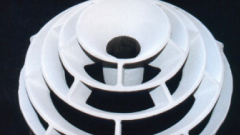WEAR RESISTANT COATINGS
PROTECT AGAINST ABRASION, EROSION, CORROSION, FRETTING/GALLING, CAVITATION, BRINELLING.
REPAIR COATINGS
NO NEED TO SCRAP AN EXPENSIVE PART. REPAIR OR BUILD UP TO A SPECIFIED SIZE. EXTEND PART LIFE.
RELEASE COATINGS
FEATURING DURA-SLIK™ FLUOROPOLYMER COMBINED WITH THERMAL SPRAYED COATING PROVIDES WEAR RESISTANCE ALONG WITH RELEASE PROPERTIES.
THERMAL BARRIER PROTECTION COATINGS
RESISTS TEMPERATURES UP TO 3000° F. ALLOWS THE USE OF LESS EXPENSIVE SUBSTRATE.
LOW COEFFICIENTOF FRICTION COATINGS
COATED COMPONENTS HAVE THE ABILITY TO PERFORM AT HIGHER SPEEDS.
SURFACE TRACTION COATINGS
Long lasting surface finishes that prevent slippage, interruptions & breaks. Improves web tracking and tension control.
BRUSH PLATING
Repair or rebuild to a specified size, tolerance and surface finish. Plate an entire surface or target a small localized area.
GENERAL CAPABILITIES
Services, coating features, part size capability.
HVOF Coating Streams in Machines
HVOF coating is a process that is used in the automotive industry. Automotive HVOF coating machines are very versatile and can be used to coat any number of different materials, including metal. The HVOF coating process works by using high-velocity gas flames to break down the material into particles that are then coated with HVOF spray guns. HVOF spray guns use HVOF paint which has properties that make them ideal for this type of application.
History of HVOF Coating
HVOF coating has been around since 1990 and it’s widely used today because it works so well at applying thin layers of coatings onto a wide range of different substrates. It has been used on hundreds of HVOF surfaces with great results, including everything from ships to airplanes and even medical equipment. The HVOF spray gun is what applies the material evenly so that it can harden into its final form without any problems. There are many types of HVOF coating materials but they’re all applied using an HVOF spray gun in exactly the same way.
HVOF stands for High-Velocity Oxygen Fuel which is basically another way of saying high-velocity oxygen fuel combustion (HVO). This process uses an oxidizer mixed with pressurized air or liquid as well as pure hydrogen gas at very high velocities or speeds over 1000 ft/s (300 m/s) and very high temperatures around 5000 degrees Fahrenheit or 2700 degrees Celsius to create HVOF coating.
The HVO stream is directed through a ring-shaped nozzle which breaks the HVO into smaller droplets of molten metal suspended in gas, also known as plasma. The resulting spray mixes with the lubricant being sprayed evenly on your surface before it hardens completely so you can’t feel any difference except for knowing that your surface has been coated properly!
HVOF coatings are extremely durable because they have an extreme hardness rating between 60 and 90 Rockwell C where diamond tops out at 100 Rc so HVOF really does go above and beyond when it comes to wearing resistance, corrosion resistance, and lubricity.
HVOF Coating Machines
There are HVOF coating machines available that can be used to coat a wide variety of materials. This makes HVOF coating ideal for use in the automotive industry. The HVOF spray gun is an important part of the HVOF process and it’s what actually applies the material onto whatever needs to get coated. HVOF spray guns have a lot of different uses, but they’re especially useful when you need something to be applied evenly on vertical surfaces. Any other type of machine would likely not work as well due to its inability to move laterally across a surface with ease as HVOF paint guns do.








